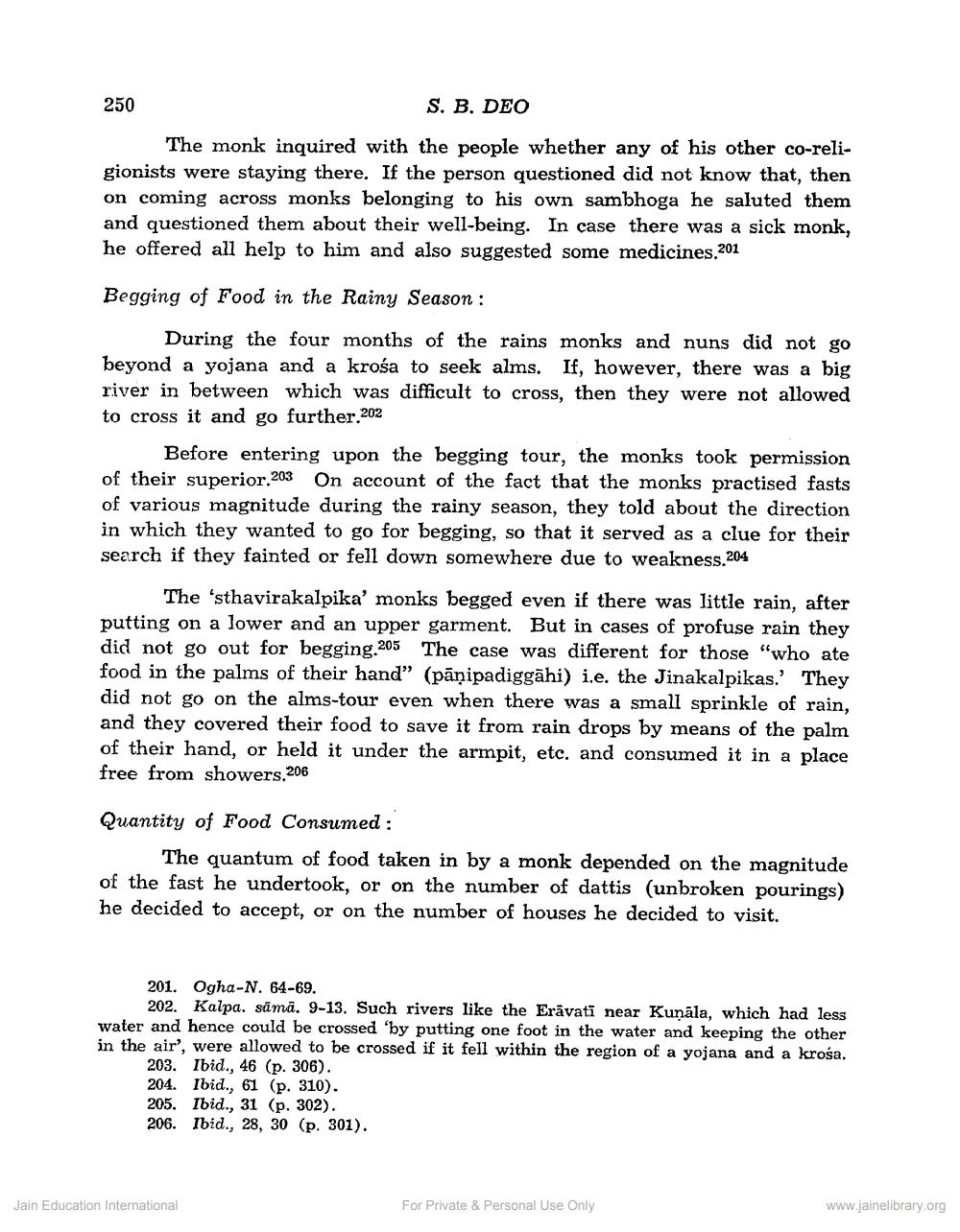________________
250
S. B. DEO
The monk inquired with the people whether any of his other co-religionists were staying there. If the person questioned did not know that, then on coming across monks belonging to his own sambhoga he saluted them and questioned them about their well-being. In case there was a sick monk, he offered all help to him and also suggested some medicines,201
Begging of Food in the Rainy Season:
During the four months of the rains monks and nuns did not go beyond a yojana and a krośa to seek alms. If, however, there was a big river in between which was difficult to cross, then they were not allowed to cross it and go further.202
Before entering upon the begging tour, the monks took permission of their superior. On account of the fact that the monks practised fasts of various magnitude during the rainy season, they told about the direction in which they wanted to go for begging, so that it served as a clue for their search if they fainted or fell down somewhere due to weakness.204
The 'sthavirakalpika' monks begged even if there was little rain, after putting on a lower and an upper garment. But in cases of profuse rain they did not go out for begging.205 The case was different for those "who ate food in the palms of their hand" (pänipadiggähi) i.e. the Jinakalpikas.' They did not go on the alms-tour even when there was a small sprinkle of rain, and they covered their food to save it from rain drops by means of the palm of their hand, or held it under the armpit, etc. and consumed it in a place free from showers.20
Quantity of Food Consumed:
The quantum of food taken in by a monk depended on the magnitude of the fast he undertook, or on the number of dattis (unbroken pourings) he decided to accept, or on the number of houses he decided to visit.
201. Ogha-N. 64-69.
202. Kalpa. sāmā. 9-13. Such rivers like the Erävati near Kunala, which had less water and hence could be crossed 'by putting one foot in the water and keeping the other in the air', were allowed to be crossed if it fell within the region of a yojana and a krośa. 203. Ibid., 46 (p. 306). 204. Ibid., 61 (p. 310). 205. Ibid., 31 (p. 302). 206. Ibid., 28, 30 (p. 301).
Jain Education International
For Private & Personal Use Only
www.jainelibrary.org




